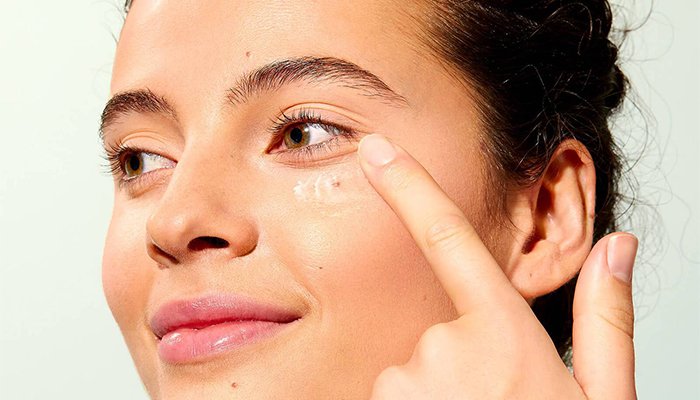Benefits of Mandelic Acid in Skincare

Discover everything you need to know about this delicate exfoliator, including its benefits and adverse effects.
Hearing the word "acid" or "chemical" in any form of hygiene product can be daunting, but we promise it's not. Hyaluronic acid, for example, is actually produced naturally by the human body and is a hero hydrator, particularly for parched skin. You may have also seen the word "acid" on other skincare products, such as star chemical exfoliators salicylic acid (ideal for acne-prone skin) or glycolic acid (great for enhancing radiance).
The increasingly popular mandelic acid is starting to come to the forefront as well, and if you haven't heard of it yet, we're here to tell you everything you need to know about this sensitive skin-friendly exfoliator, including how to use it, who it's best for, adverse effects and more.
What is mandelic acid?
There are several kinds of chemical exfoliators, including AHAs, BHAs and PHAs — mandelic acid is an AHA derived from astringent almonds. It was discovered in Germany in 1831 and literally takes its name from the German word for almond, "mandel," shares GH Beauty Lab Director Sabina Wizemann. The chemical exfoliant "works by breaking down the bonds between skin cells, promoting exfoliation and revealing fresher, smoother skin underneath," says Ali Shahbaz, M.D. F.A.A.D. F.R.C.P.C., a double board-certified dermatologist at Westlake Dermatology in Austin, Texas.

What are the benefits of mandelic acid?
Mandelic acid has a similar molecular structure to glycolic acid but with larger molecules, explains Shereene Idriss, M.D., a board-certified dermatologist and proprietor of Idriss Dermatology in New York City. The larger molecular size means that "it penetrates the skin more slowly and gently, making it suitable for sensitive skin types and reducing the risk of irritation,"
Here, more on the benefits of the gentle exfoliant:
Exfoliates
First and foremost, it, of course, provides exfoliation. Mandelic acid "helps to remove dead skin cells from the surface of the skin, promoting a brighter complexion,". This also smoothes skin and enhances tone and texture, notes Blair Murphy-Rose, M.D., F.A.A.D., a board-certified dermatologist at the Laser & Skin Surgery Center of New York and Clinical Instructor of Dermatology at Weill Cornell Medical College.
Anti-aging
Using this chemical exfoliant can "reduce the appearance of fine lines and wrinkles," says Dr. Idriss. It does so by "stimulating collagen production,". Mandelic acid can also reduce dullness,.
Anti-acne
"Mandelic acid has antibacterial properties and prevents clogged pores," explains Dr. Murphy-Rose. This makes it effective in treating acne-prone skin,. One study even demonstrated that "mandelic acid was better at treating inflammatory acne lesions and had fewer adverse effects compared to salicylic acid," says Wizemann.
Treats hyperpigmentation
Fading dark blotches is feasible if you incorporate this exfoliant into your routine. It "can improve the appearance of hyperpigmentation, including dark spots and uneven skin tone, by promoting cell turnover and inhibiting melanin production,".
How long does it take for mandelic acid to work?
The time it takes to see results from using mandelic acid fluctuates on several factors, "as not all are created equal and some products may be a combination of multiple exfoliating acids,". Skin type, product concentration and frequency of use can also factor into how long it takes. However, in general, "you may start noticing improvements in skin texture and tone within a few weeks of consistent use, but significant results may take longer, around six to 12 weeks,". You may also read this: Guide to the Best Facial Treatment for Aging Skin
Is there anyone who shouldn't use mandelic acid?
Due to its larger molecular size, mandelic acid is known for being mild enough to be used on many skin types, even sensitive. However, that doesn't mean that it's for everyone. People with sensitive skin, dermatitis or exposed acne lesions "may still react to it and should use it cautiously," advises Wizemann. Note that "those with allergies to almonds should avoid mandelic acid,".
What are the side effects of mandelic acid?
Side effects of mandelic acid "may include mild irritation, redness and peeling, particularly with higher concentrations or when first starting use,". "People with very sensitive skin may need to start with lower concentrations and progressively increase frequency of use." Overusing any AHA, including mandelic acid, "increases photosensitivity, so it is even more important to use sun protection when using these ingredients,".
What skin types is mandelic acid ideal for?
Great for sensitive skin especially, mandelic acid is "generally considered safe for most skin types," says Dr. Idriss. "However, as with all exfoliating acids, be careful not to overdo it and wreck your skin barrier in the process." Dr. Murphy-Rose even recommends it for those who cannot tolerate harsher acids. If you have sensitive skin, acne-prone skin or aging skin, this can be a wonderful ingredient to include in your hygiene routine. Regardless of how moist or dehydrated your skin is, you can likely benefit from mandelic acid.
